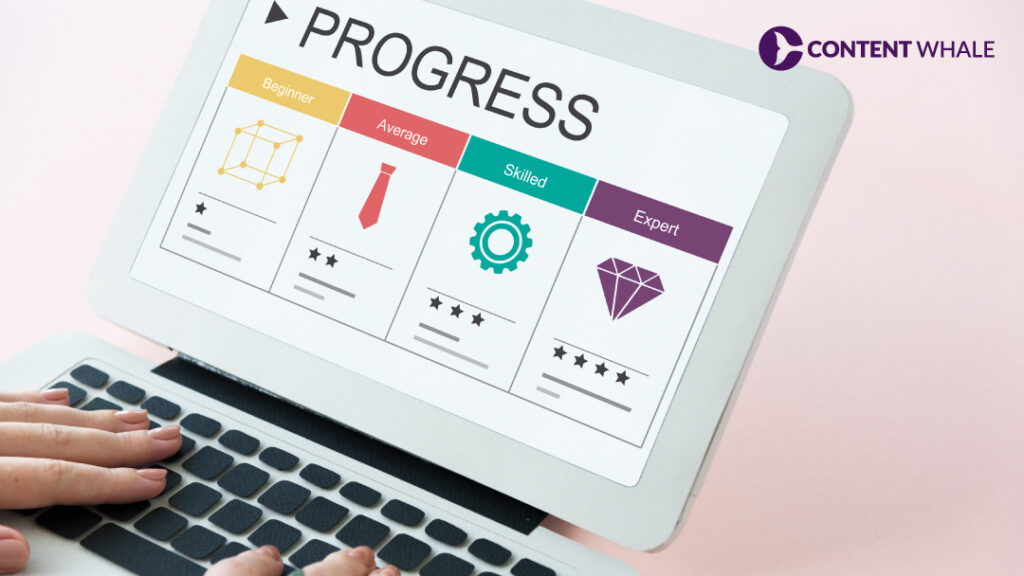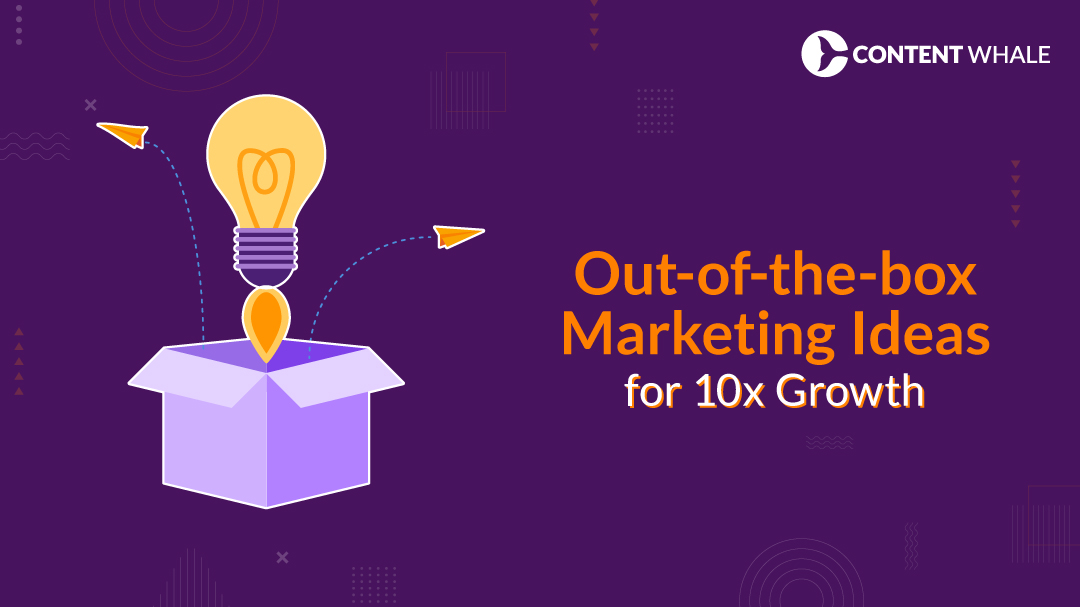Understand the role of content in the customer journey. Explore different customer journey stages and corresponding content types. Learn strategies for effective content creation at each stage. Discover how to measure your content’s impact. Implement best practices for your content marketing strategy to enhance content for customer engagement and optimize the overall buyer’s journey.
The customer journey is the process customers go through, from realizing they have a need to become loyal advocates. It’s essential because it helps businesses understand and predict customer behavior. The role of content in the customer journey is crucial. Content influences decisions at every stage, guiding prospects toward becoming loyal customers.
Each stage of the customer journey— Awareness, Consideration, Decision, Retention, and Advocacy—requires specific content. By aligning content with these stages, businesses can effectively engage and convert customers. This guide explores how different content types can be strategically used at each stage. It will help you understand how to create content for customer engagement, ensuring a seamless and productive buyer’s journey.
Content marketing strategy is key to this process. A well-developed strategy ensures that your content creation aligns with each stage of the customer journey. This approach maximizes the impact of your content and helps in achieving business goals.
Understanding the Customer Journey
1. Awareness Stage
The Awareness Stage is when customers first realize they have a need or problem. Content’s role in the customer journey begins here by attracting attention and sparking interest. It should be educational, informative, and focused on identifying common problems.
Content creation for this stage includes blog posts, social media updates, infographics, and videos. These content types help increase visibility and drive traffic to your website. It’s crucial to use SEO best practices to ensure potential customers can easily discover your content.
2. Consideration Stage
During the Consideration Stage, customers have defined their problem and are researching potential solutions. Content should provide valuable insights and detailed information to help customers make informed decisions.
Content creation for this stage includes ebooks, whitepapers, webinars, and case studies. These types of content offer in-depth information and demonstrate your expertise in the field. It’s essential to present data, research findings, and practical advice to establish credibility and build trust with your audience.
3. Decision Stage
In the Decision Stage, customers evaluate their options and are ready to make a purchase decision. Content should highlight the unique benefits and features of your product or service. The role of content in the customer journey at this stage is to persuade and convince potential customers.
Effective content types include product comparisons, testimonials, detailed product guides, and free trials. This bottom-of-the-funnel content helps to address any remaining objections and reinforces the value of your offering, making it easier for customers to choose your product over competitors.
4. Retention Stage
The Retention Stage focuses on keeping customers satisfied after they have made a purchase. Content should provide ongoing support and maintain engagement to encourage repeat business.
Content for customer engagement in this stage includes newsletters, user guides, tutorials, and loyalty programs. These types of content help customers get the most out of their purchases and foster a positive relationship with your brand. Regularly updating your content and offering personalized experiences can significantly enhance customer satisfaction and loyalty.
5. Advocacy Stage
In the Advocacy Stage, satisfied customers become promoters of your brand. Content should encourage them to share their positive experiences and participate in loyalty programs. Content creation for this stage includes user-generated content, customer success stories, referral programs, and social media campaigns. These content types help amplify your brand message and attract new customers through word-of-mouth marketing. By leveraging the power of your existing customers, you can build a community of brand advocates who actively support and promote your business.
Aligning content with these customer journey stages ensures that your messaging is relevant and effective at each step. Each stage requires specific content types tailored to your customers’ needs and preferences. This strategic approach enhances content for customer engagement and improves the overall buyer’s journey.
Content for the Awareness Stage

1. Goals of the Awareness Stage
The Awareness Stage aims to attract potential customers and make them aware of their problem and your solution. The role of content in the customer journey starts here by grabbing attention and providing initial information.
2. Types of Content
- Blog posts: Offer educational insights and address common problems.
- Social media updates: Engage with a broad audience and increase visibility.
- Infographics: Present quick, digestible information.
- Videos: Explain the basics of the problem and hint at your solution.
3. Strategies for Creating Engaging and Informative Content
Create engaging headlines and visuals to capture attention. Provide educational and informative content that addresses common problems and solutions. Use SEO to ensure your content is easily discoverable. Leverage social media platforms to reach a broader audience.
4. Examples of Successful Awareness-Stage Content
Salesforce Blog Posts
Salesforce creates blog posts that address their audience’s needs, such as guides on improving customer focus or tips on holiday marketing. These posts are optimized for SEO, making them easy to find and read. Regularly turning to Salesforce’s blog builds trust and engagement.
Moz Educational Videos
Moz’s #WhiteboardFriday series is an excellent example of awareness-stage content. These videos cover topics like SEO and marketing, providing valuable insights without pushing a product. This approach builds trust and positions Moz as a helpful resource.
Deloitte Information Hub
Deloitte’s resource hub compiles articles, videos, and interviews on various topics. This hub makes complex subjects like accounting more accessible, establishing Deloitte as a knowledgeable and reliable source.
General Electric Podcast
GE created a science-fiction podcast called The Message to show a new side of their brand. This unique content is entertaining and engaging, increasing brand visibility and changing perceptions.
Imperva Infographics
Imperva uses infographics to explain complex cybersecurity topics. These infographics are easy to share and spread brand awareness while providing valuable information.
By producing high-quality, engaging content, you can effectively introduce your brand to potential customers. This approach ensures they move to the next stage of the buyer’s journey. A solid content marketing strategy focuses on creating content for customer engagement at this stage. This strategy is the foundation of effective content creation and aligns with the role of content in the customer journey.
Content for the Consideration Stage

1. Goals of the Consideration Stage
The Consideration Stage aims to educate customers. Here, they define their problem and research solutions. The role of content in the customer journey is to provide valuable insights and detailed information.
2. Types of Content
- Ebooks: Offer in-depth information on various solutions.
- Whitepapers: Present research findings and industry insights.
- Webinars: Host interactive sessions with experts.
- Case studies: Share real-life examples of successful outcomes.
3. Strategies for Providing Valuable and In-depth Information
Create in-depth content that offers practical advice. Use data and research to establish credibility. Provide downloadable content to build your lead database. Host webinars to engage directly with potential customers and answer their questions.
4. Examples of Successful Consideration-Stage Content
a) HubSpot’s Inbound Marketing Ebooks
HubSpot offers a variety of ebooks on inbound marketing strategies. These ebooks provide in-depth information on topics such as lead generation, email marketing, and SEO. They help potential customers understand how to improve their marketing efforts using HubSpot’s tools.
b) Salesforce’s Whitepapers
Salesforce regularly publishes whitepapers on industry trends and CRM best practices. These whitepapers provide valuable insights backed by research and data, helping businesses understand the benefits of Salesforce’s CRM solutions.
c) Moz’s Webinars
Moz hosts webinars on SEO best practices, featuring industry experts. These webinars offer practical advice and answer audience questions in real-time, helping potential customers see the value in Moz’s SEO tools.
d) IBM’s Case Studies
IBM showcases detailed case studies that highlight how their solutions have helped various companies improve their operations. For instance, a case study on IBM’s work with a healthcare provider demonstrates how their technology improved patient care and operational efficiency.
Providing valuable, informative content builds trust. It positions your brand as a credible and knowledgeable resource. This content helps guide customers towards making an informed decision. Aligning your content marketing strategy with these customer journey stages is essential. Effective content creation during this stage supports content for customer engagement. This approach enhances the overall buyer’s journey and moves prospects closer to a purchase decision.
Content for the Decision Stage

1. Goals of the Decision Stage
The Decision Stage focuses on persuading customers to choose your solution. The role of content in the customer journey here is to convince and build confidence. Your content should highlight product benefits and address concerns.
2. Types of Content
- Product comparisons: Highlighting differences and advantages.
- Testimonials: Showcasing positive customer experiences.
- Detailed product guides: Explaining features and benefits.
- Free trials: Allowing hands-on experience.
3. Strategies for Persuading and Convincing Potential Customers
Highlight unique selling points and benefits. Use testimonials and case studies to build trust. Provide detailed guides to explain product features. Offer free trials to let potential customers experience the product firsthand.
4. Examples of Successful Decision-Stage Content
a) Buffer
Buffer offers a free trial of their social media management tool, allowing users to experience its benefits before committing. This hands-on experience helps convert leads into paying customers.
b) Spotify
Spotify provides special discounts and family plans tailored to different user needs. Personalized playlists and recommendations enhance the user’s experience, making them more likely to commit to a subscription.
c) Netflix
Netflix promotes various subscription plans that cater to different viewer needs. By offering a seamless and user-friendly experience, Netflix ensures that users remain committed to their service.
d) Webflow
Webflow offers a free trial of their website builder, allowing users to test its features. This strategy encourages users to upgrade to paid plans after experiencing the platform’s capabilities.
e) Airfocus
Airfocus uses live demos to showcase their product’s value. These sessions highlight features and differentiate the product from competitors, building confidence in potential customers .
By offering persuasive and detailed content, you help potential customers feel confident in their decision. This approach is a key part of your content marketing strategy. Effective content creation at this stage supports content for customer engagement. It ensures that prospects are well-informed and ready to convert. Aligning content with these customer journey stages is essential for a successful buyer’s journey.
Content for the Retention and Advocacy Stages

1. Goals of Retention and Advocacy Stages
Retention aims to keep customers satisfied post-purchase. Advocacy focuses on turning satisfied customers into brand promoters. The role of content in the customer journey here is to maintain engagement and encourage sharing.
2. Types of Content
- Newsletters: Regular updates and useful information.
- Loyalty programs: Rewards for repeat purchases.
- Customer success stories: Highlighting positive outcomes.
- User-generated content: Encouraging customer participation.
3. Strategies for Maintaining Customer Relationships and Encouraging Advocacy
Send regular newsletters with updates and tips. Implement loyalty programs to reward repeat customers. Share success stories to inspire others. Encourage user-generated content through contests and social media.
4. Examples of Successful Retention and Advocacy-Stage Content
a) Dropbox’s Referral Program
Dropbox’s referral program is a great example. It offers additional storage space to users who refer friends. This strategy has helped Dropbox grow its user base significantly while keeping existing customers engaged and rewarded.
b) Cisco Champions Program
Cisco created the Cisco Champions program to leverage the expertise of their advocates. Participants write blog posts, join Twitter chats, and create content that showcases their skills and knowledge, all while promoting Cisco. In return, Cisco provides them with networking opportunities, early access to products, and exclusive event invitations.
c) Starbucks’ Tweet-A-Coffee Campaign
Starbucks ran a campaign called Tweet-A-Coffee, allowing customers to buy a $5 gift card for friends via Twitter. This generated substantial social media buzz and engagement, demonstrating how creative and social-focused strategies can drive customer advocacy.
d) Okta’s Oktane Event
Okta’s annual event, Oktane, focuses on customer appreciation and engagement. They invited loyal customers to share their success stories and promoted the event through social media, resulting in high engagement and a significant increase in social impressions.
e) Userpilot’s Personalized Onboarding
Userpilot enhances customer retention by personalizing the onboarding experience. They use interactive walkthroughs and customized resource centers to ensure users get the most out of their product, making the process more engaging and effective.
Maintaining engagement is key to building long-term relationships. Turning satisfied customers into advocates enhances brand loyalty. This approach is a vital part of your content marketing strategy. Effective content creation for these customer journey stages ensures continued content for customer engagement. It supports a seamless and rewarding buyer’s journey from start to finish.
Conclusion

Aligning content with each stage of the customer journey is essential. Content’s role in the customer journey is to guide prospects through the buying process. An effective content marketing strategy enhances content for customer engagement.
Develop a comprehensive content strategy for all customer journey stages. Tailor your content creation to meet the specific needs at each stage. Regularly update and optimize your content based on feedback and analytics.
By understanding and applying these principles, you can improve the overall buyer’s journey. This approach helps build trust, increase engagement, and drive conversions. Implement these best practices to support customers throughout their journey.
Ready to take your content strategy to the next level? Contact us and let our experts help you craft content that drives results.
FAQs
What is the customer journey and why is it important?
The customer journey is the process customers go through, from awareness to advocacy. Understanding this journey helps businesses tailor their content marketing strategy to meet customer needs at each stage.
How can content influence the different stages of the customer journey?
Content provides the necessary information and guidance at each stage. It attracts attention, educates prospects, persuades decision-making, and maintains engagement. The role of content in the customer journey is to ensure a smooth transition from one stage to the next.
What types of content are most effective at the awareness stage?
Blog posts, social media updates, infographics, and videos are effective. These content types capture attention and provide initial information, playing a key role in the early stages of the buyer’s journey.
How can I measure the impact of my content on the customer journey?
Use analytics tools to track metrics like engagement, conversion rates, and customer feedback. This data helps assess the effectiveness of your content creation and make necessary adjustments to your content marketing strategy.
What are some best practices for creating content for the customer journey?
Focus on providing valuable, relevant information at each stage. Use SEO best practices to ensure discoverability. Regularly update and optimize content based on performance data and customer feedback. This approach enhances content for customer engagement and improves the overall buyer’s journey.





